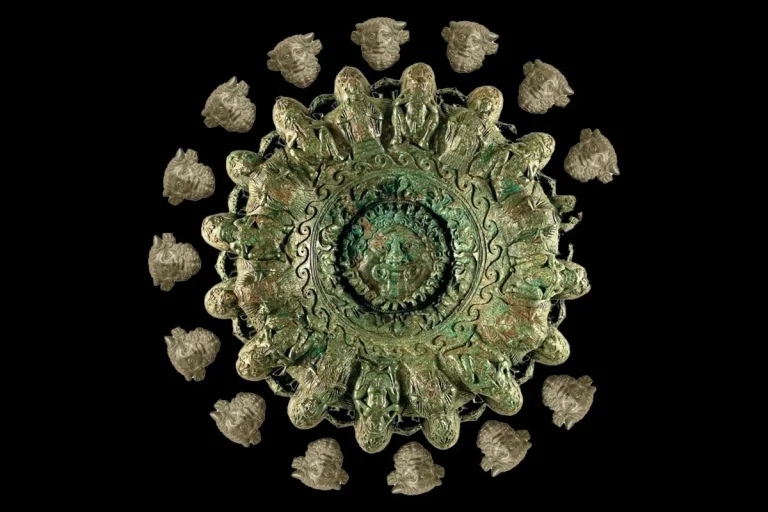The discovery of a 2500-year-old bronze lamp near Cortona, Italy, has long puzzled researchers since its initial discovery in 1840. However, a recent study published by Ronak Alburz in the journal Etruscan and Italic Studies promises to unravel the mystery surrounding this ancient artifact, shedding new light on its cultural and religious significance.
The lamp, associated with the enigmatic cult of Dionysus, offers a glimpse into the religious practices of the Archaic Etruscan civilization, which thrived in parts of Tuscany and Umbria between 900 BC and 27 BC. The incorporation of Etruscan culture into the expanding Roman Republic further adds to the historical context of the lamp’s discovery.
While previous interpretations of the lamp’s decorative motifs suggested connections to the Greek river god Achelous, Alburz’s study presents compelling evidence that the lamp actually depicts Dionysus, the Greek god of wine, pleasure, and ecstasy. The 16 bull-shaped horned figures adorning the lamp are now believed to represent aspects of Dionysus, aligning with the iconography associated with this deity.
“Dionysos thiasus,” a term used to describe the followers and revelers of Dionysus engaged in cultic performances, likely inspired the design of the lamp. These rituals, characterized by ecstatic trance-inducing practices, wine consumption, music, and dance, were central to the worship of Dionysus and are believed to have influenced the development of theater in ancient Greece.
Dionysus himself occupies a prominent place in Greek mythology, symbolizing madness, self-transcendence, and uninhibited celebration. Stories surrounding his birth and upbringing, often involving Zeus and various nymphs, contribute to his multifaceted and enigmatic persona. The cult of Dionysus, with its emphasis on ecstatic rituals and symbolic elements like the vine, ivy, panther, and bull, played a pivotal role in ancient Greek religious practices.
The lamp’s association with Dionysus underscores the enduring influence of this deity on ancient cultures and religions. Festivals dedicated to Dionysus, characterized by revelry and revelers dressed as satyrs and maenads, provided a space for communal celebration and artistic expression. These festivals, intertwined with the development of theater and dramatic performances, highlight the profound impact of Dionysus on Greek culture and society.
